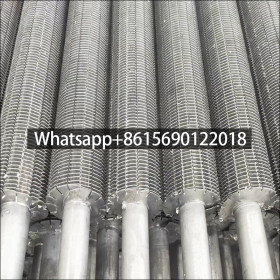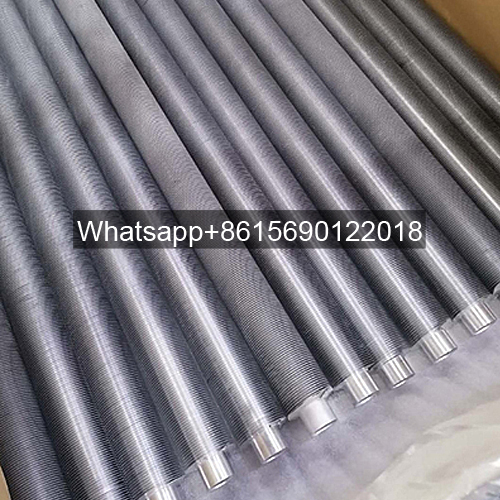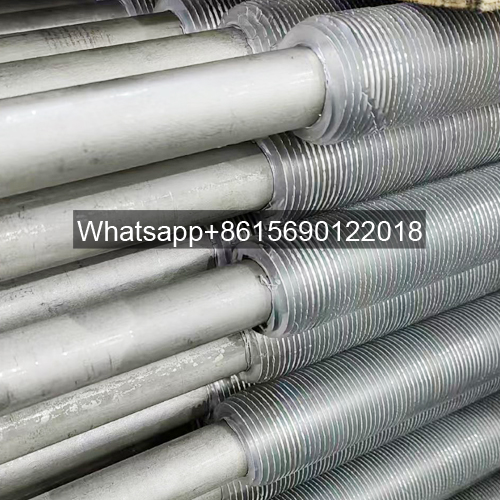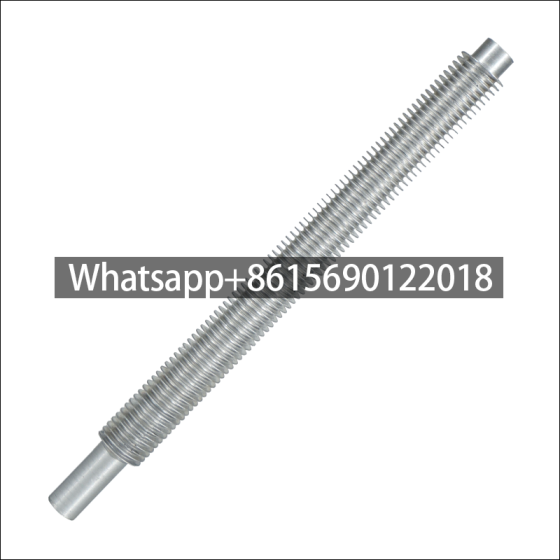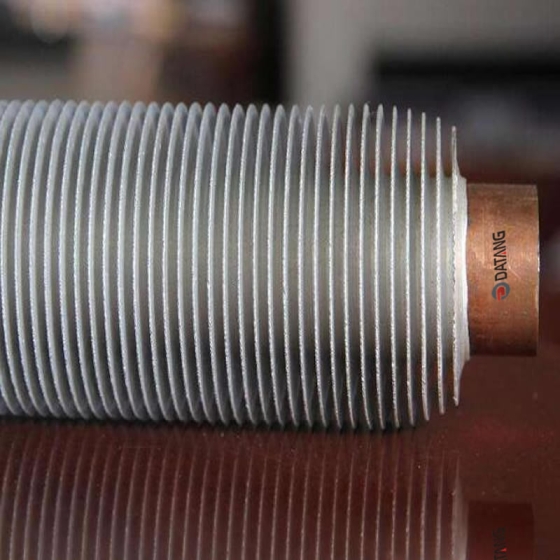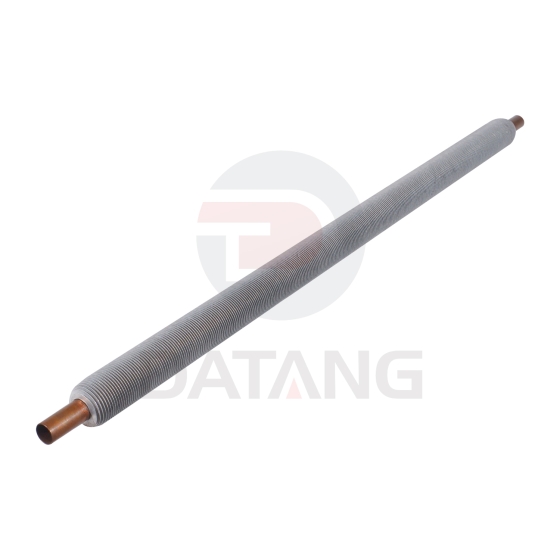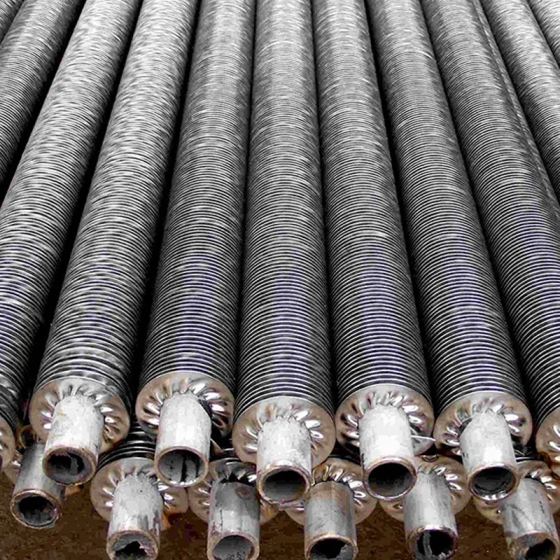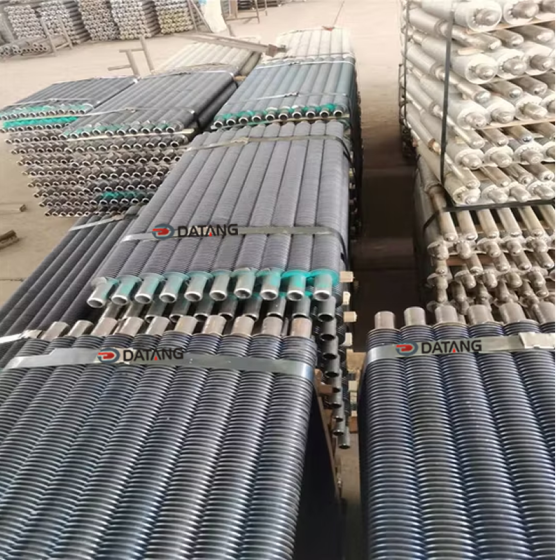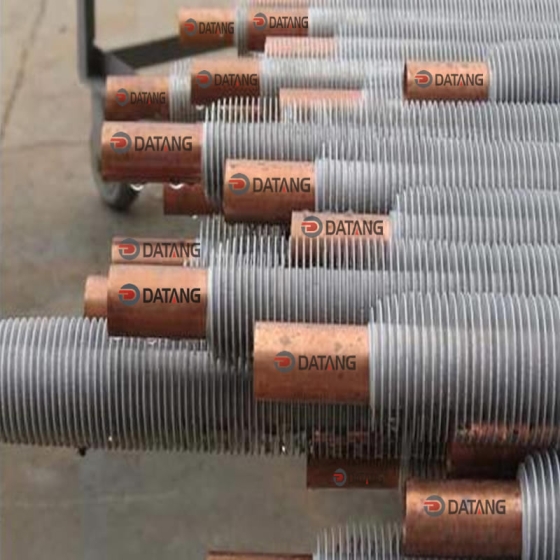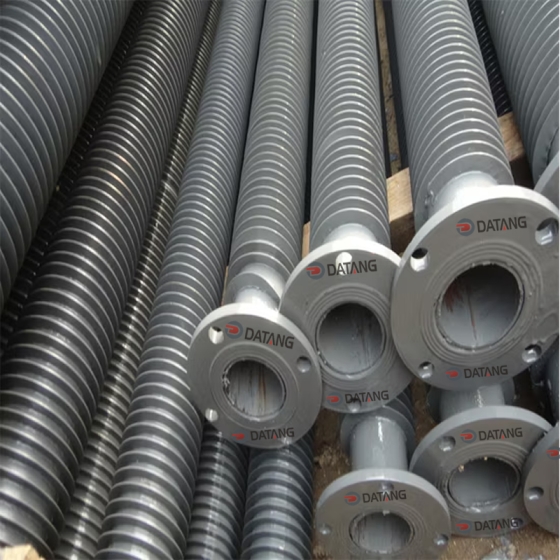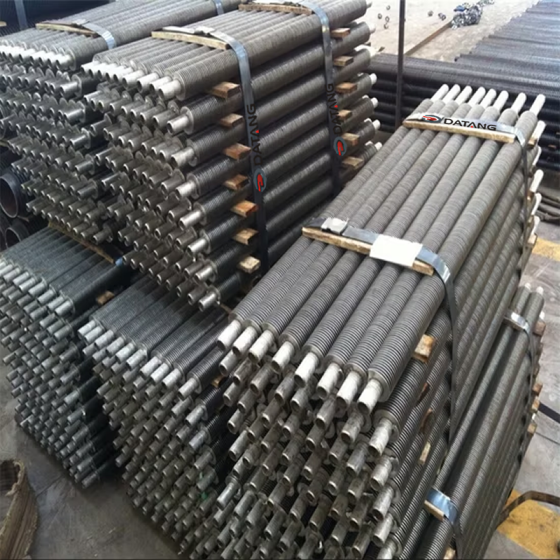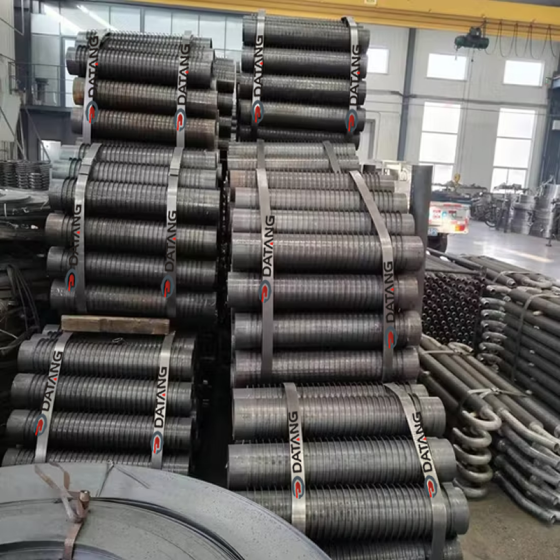What is extruded serrated finned tube?
Extruded Serrated Finned Tubes are bimetallic tubes whose outer aluminium surface is finned by cold plastic deformation, but the aluminum fin is serrated, which great improve the fin tube heat transfer capacity.
How to fabricate the extruded serrated finned tube?
Insert tube into the aluminum muff tube–>compressing or rolling–>Serrated the fins–>strip peeling–>washing–pressure test–>blast blowing–>packaging.
The serrated fin is made of an outer aluminum tube with a thick wall (muff) that is aligned over an inner base tube. The two tubes are pushed through three arbors with rotating discs that squeeze or extrude the aluminum fins up and out of the muff material in a spiral shape in a single operation. After that serrated the fin in 12 tooth or 24 tooth. As a result, the tubes base is completely connected to the main tube. Furthermore the serrated fins increase the flow area of flue gas and wind tunnel effect are increased, and the pressure difference on both sides of the fin is reduced.
Extruded serrated finned tube size and material:
| Extruded serrated finned tube size and material | ||
| Tube OD | 10~51 (mm) | 0.4”~2” |
| Tube Wall Thk | 1.65~3.0 (mm) | 0.065”~0.118” |
| Tube Length | ≤18,500 (mm) | ≤60.7 ft |
| Fin Thk | 0.3~1.2 (mm) | 0.012”~0.047” |
| Fin Height | 5~16 (mm) | 0.2”~0.63” |
| Fin Pitch | 100~555 (mm) | 3~14 FPI |
| Serrates | 12or 24 | 12 or 24 |
| Fin Type | Extruded | |
| Material Combinations | ||
| Fin Material | Aluminum (most common grade:Alu.1100, Alu.1060, Alu. 6063) | |
| Copper | ||
| Tube Material | C.S. (most common grade: A179, A192,SA210 GrA1/C,A106 Gr B ) | |
| S.S. (most common grade: TP304, 316, 321, 347,A789) | ||
| Copper (most common grade:UNS12200,14200, 70600, CuNi70/30, CuNi 90/10) | ||
| Titanium (most common grade: B338Gr2) | ||
| Applied Temperature | 300°C | |
| Type of Service | Medium temperature, severe atmospheric corrosive environment. | |
Application cases of extruded serrated fin tubes
1. Petrochemical industry
In the waste heat recovery system of the refinery, the serrated fin tubes enhance the turbulence effect by destroying the fluid boundary layer, which increases the heat exchange efficiency by more than 30%. A petrochemical enterprise uses steel-aluminum composite serrated fin tubes to recover high-temperature flue gas waste heat, saving more than 20 million yuan in energy costs annually. Its serrated structure can also reduce dust accumulation and adapt to the harsh working conditions of dusty flue gas.
2. Power industry
Air-cooled island system: large power stations use extruded serrated fin tubes to replace traditional light tubes. The fin height is 25mm, and the heat dissipation per unit area is increased to 1.8 times that of ordinary heat dissipation tubes, with a water saving rate of more than 90%.
Boiler economizer: High-frequency welded serrated fin tubes still maintain stable heat transfer in high-temperature and high-pressure steam environments (1.5MPa/200℃), and the weld strength reaches 95% of the base material.
3. Industrial drying equipment
The steam drying line of the food processing plant adopts serrated fin tube heat exchanger, which adapts to high humidity air by increasing the fin spacing (4-6mm), improves the drying efficiency by 25%, and avoids clogging between fins. The corrosion resistance of aluminum serrated fins extends the service life of the equipment to 10 月日.
4. Automobile and electronic heat dissipation
New energy vehicle battery cooling: aluminum alloy extruded serrated fin tubes are used for battery pack heat dissipation modules, with a weight reduction of 40%, a thermal conductivity of 211.9W/m·K, and effective control of battery temperature within a safe range.
Data center liquid cooling system: copper serrated fin tubes with forced convection, heat flux density handling capacity of 150W/cm², meet the high-power heat dissipation requirements of servers.
5. Aerospace thermal management
The aircraft engine oil cooling system adopts titanium alloy serrated fin tubes, which realize fin-base tube integration through extrusion process, have excellent vibration resistance, and no structural failure under extreme temperature difference (-55℃~300℃).
 dtfinnedtube.com
dtfinnedtube.com




